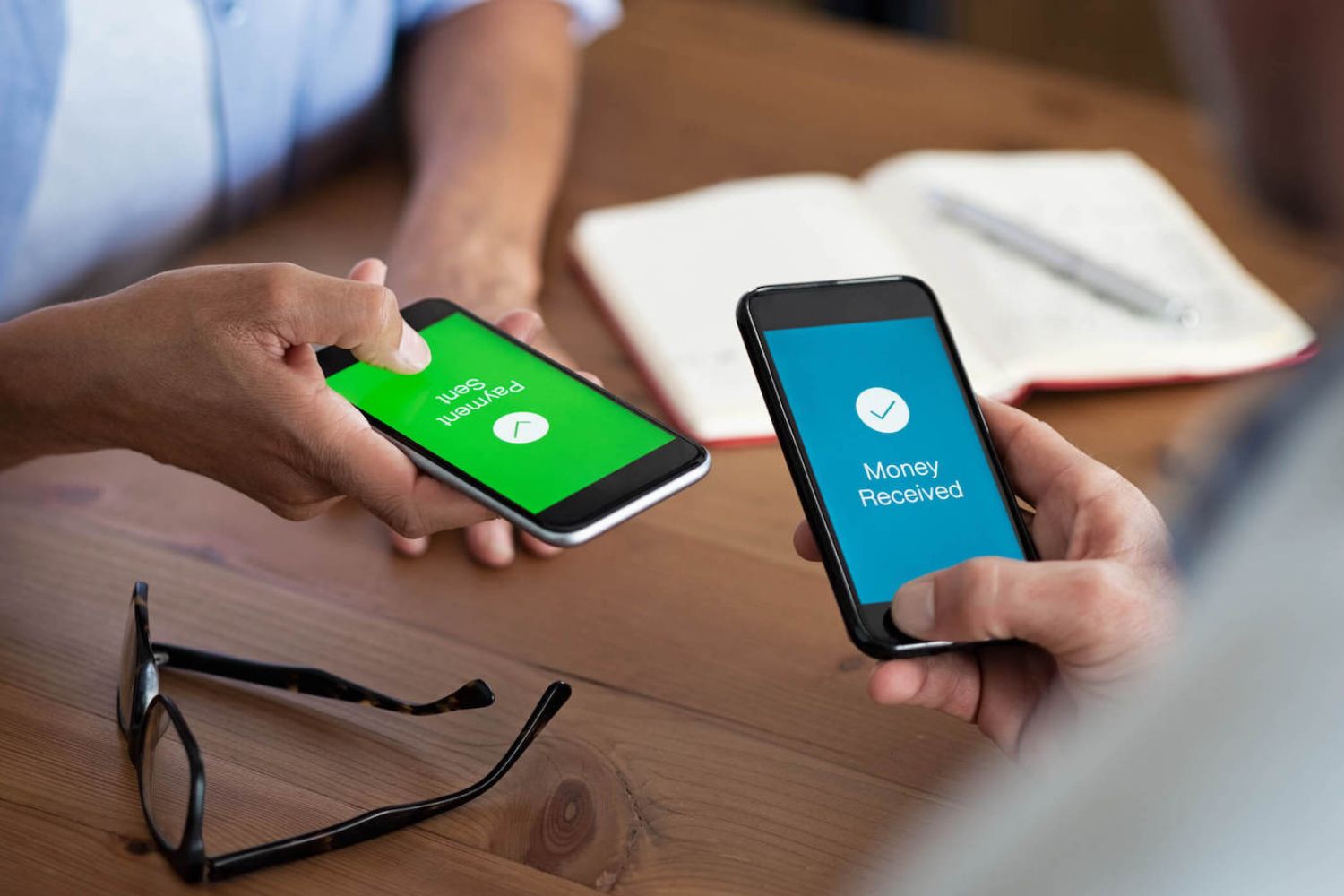Introduction
Peer-to-peer (P2P) apps have revolutionized the way we handle financial transactions, making it easier than ever to send money, split bills, or even borrow money from friends. With the convenience and accessibility they offer, P2P apps have gained immense popularity among users worldwide. However, along with their benefits, there are also inherent risks associated with using these apps.
P2P apps allow users to transfer funds directly from their bank accounts or credit cards to another individual’s account. While this offers a convenient way to make payments, it also raises concerns about the privacy and security of personal information. With cybercrimes on the rise, it’s vital to understand the risks involved in using P2P apps and take appropriate precautions to protect yourself.
One of the primary privacy risks associated with P2P apps is the potential for your personal and financial data to be compromised. Despite the strict security measures implemented by these apps, there is always a risk of unauthorized access to your information. Hackers may attempt to exploit vulnerabilities or use phishing techniques to gain access to your login credentials or personal details. It’s essential to use strong, unique passwords, enable two-factor authentication, and regularly update the app to minimize these risks.
Fraud is another significant concern when using P2P apps. Although most platforms have implemented fraud prevention measures, there is still a possibility of falling victim to scams. Fraudsters may pose as legitimate users or create fake profiles to deceive unsuspecting users. It’s crucial to exercise caution when transacting with unfamiliar individuals and avoid sharing sensitive information, such as your social security number or full bank account details.
Security risks are also prevalent in the P2P app landscape. While app developers invest significant resources in ensuring the security of their platforms, there is always a chance of vulnerabilities being exploited. Malware attacks, data breaches, or even physical theft of devices could lead to unauthorized access to your accounts. Regularly updating your devices and using antivirus software can help protect against these risks.
Privacy Risks
When using P2P apps, privacy risks arise due to the personal and financial information shared on the platform. While the apps have security measures in place, it’s important to be aware of potential privacy concerns.
One of the main privacy risks in P2P apps is the collection and use of user data. These apps often collect personal information such as names, phone numbers, and email addresses. While this is necessary to facilitate transactions, there is a possibility of this information being used for targeted advertising or even being shared with third parties without your consent. It’s essential to thoroughly review the app’s privacy policy and settings to understand how your data is being handled and take necessary steps to protect your privacy.
Another privacy risk is the potential for data breaches or security vulnerabilities. Despite the efforts made by app developers to ensure security, no system is entirely immune to hacks or cyber attacks. If a P2P app experiences a data breach, it can result in the unauthorized access to user data, including financial transactions and personal details. Regularly updating the app and using strong, unique passwords can help minimize this risk, but it’s essential to monitor your accounts for any suspicious activity and report it immediately.
Furthermore, P2P apps may also have access to other personal information stored on your device, such as contacts or location data. While this can enhance the user experience by allowing seamless payment to contacts, it also raises privacy concerns. Be mindful of the permissions you grant to these apps and review the settings to limit access to sensitive information.
To mitigate privacy risks, it’s advisable to use reputable and well-established P2P apps that prioritize user privacy and security. Look for apps that offer strong encryption protocols and transparent privacy policies. Additionally, regularly reviewing your app settings, monitoring your transactions, and being cautious of sharing unnecessary personal information can help protect your privacy while using P2P apps.
Fraud Risks
While P2P apps have made financial transactions more convenient, they also expose users to potential fraud risks. Fraudsters are adept at exploiting vulnerabilities and tricking unsuspecting users, which is why it’s crucial to be aware of the common fraud risks associated with using P2P apps.
One of the significant fraud risks in P2P apps is the presence of fraudulent individuals or fake profiles. Scammers may create fake accounts, posing as legitimate users to deceive others into sending money or sharing personal information. These fraudsters may use various tactics, such as offering goods or services at unusually low prices or creating sob stories to evoke sympathy and generosity. It’s imperative to exercise caution when transacting with unfamiliar individuals and thoroughly investigate profiles and reviews before engaging in any financial transactions.
Phishing is another prevalent fraud technique that users must be cautious of. Fraudsters may send phishing emails or messages, pretending to be from the P2P app provider, to trick users into revealing their account login credentials or other sensitive information. To protect yourself from phishing scams, avoid clicking on suspicious links, independently access the app instead of clicking on email links, and never share personal information through email or text messages.
There is also a risk of identity theft when using P2P apps. Sharing personal details with unknown parties may lead to unauthorized access to your identity, potentially resulting in financial loss or damage to your credit rating. Protect your personal information by only transacting with trusted individuals, avoiding sharing unnecessary personal details, and regularly monitoring your financial accounts for any suspicious activity.
To mitigate fraud risks, it’s crucial to use secure and reputable P2P apps. Research and choose apps with robust fraud prevention measures in place, such as authentication processes, transaction verification, and dispute resolution mechanisms. Additionally, being cautious, skeptical, and vigilant when transacting with unfamiliar individuals and practicing good cybersecurity habits, such as using strong, unique passwords and keeping your devices and apps up to date, can go a long way in protecting yourself from fraud in the P2P app space.
Security Risks
While P2P apps provide convenience and ease of use, they also present security risks that users should be mindful of. Understanding these risks and taking necessary precautions can help protect your financial and personal information.
One of the primary security risks in P2P apps is the potential for data breaches or hacking attempts. Despite rigorous security measures implemented by app developers, vulnerabilities can still be exploited by hackers. A successful data breach can result in the exposure of sensitive user data, including financial transactions and personal information. To minimize this risk, it’s crucial to regularly update your P2P app, enable multi-factor authentication, and use strong, unique passwords for your accounts.
Another security risk is the presence of malware or malicious applications. Cybercriminals may attempt to trick users into downloading fake or compromised P2P apps, which can lead to the installation of malware on their devices. Malware can compromise the security of your financial accounts and even steal sensitive information. To protect against this risk, it’s essential to download apps only from reputable sources, such as official app stores, and regularly scan your device for malware using trusted antivirus software.
Physical theft or loss of devices is also a security risk to consider. If your smartphone or tablet, which has your P2P app installed, gets stolen or misplaced, unauthorized individuals could potentially access your accounts and make unauthorized transactions. Setting up biometric authentication, such as fingerprint or face recognition, can add an extra layer of security to your device. Additionally, enabling remote locking and wiping capabilities can help protect your data in case of device loss.
It’s important to note that security is a shared responsibility. P2P app users must ensure they are using the latest, updated versions of the app to take advantage of the most recent security enhancements. Regularly reviewing transaction histories, monitoring account activity, and reporting any suspicious transactions or activities promptly can help detect and prevent security breaches.
By being proactive and staying informed about security best practices, you can mitigate security risks associated with using P2P apps. Remember to implement strong security measures, exercise caution when transacting, and stay vigilant for any signs of suspicious activity to safeguard your financial and personal information while using P2P apps.
User Reviews and Ratings
When considering using a P2P app, it’s essential to take into account the experiences and feedback of other users. User reviews and ratings can provide valuable insights into the reliability, usability, and overall satisfaction with a particular app. Paying attention to user feedback can help you make an informed decision and avoid potential pitfalls.
User reviews often highlight the strengths and weaknesses of a P2P app. Reading through reviews can give you an understanding of common issues or concerns raised by users. Look for patterns in reviews to identify recurring problems, such as technical glitches, slow customer support, or difficulties with transaction processing. Conversely, positive reviews can provide reassurance about the app’s reliability and user-friendly features.
Ratings play a crucial role in evaluating the overall performance of a P2P app. They provide an aggregated measure of user satisfaction and can give you a quick snapshot of how well the app is received by the user base. Keep in mind that while high ratings generally indicate a positive user experience, it’s essential to read the accompanying reviews to get a comprehensive understanding of the app’s strengths and weaknesses.
In addition to user reviews and ratings specific to the app, it can also be helpful to seek recommendations or insights from friends, family, or colleagues who have used the app. Their firsthand experiences can provide valuable insights and recommendations that may align with your needs and preferences.
However, it’s important to approach user reviews and ratings with some degree of skepticism. Not all reviews may be genuine, and some may be biased or influenced by personal motivations. Fake positive reviews or negative reviews from competitors can distort the true picture of an app’s performance. Consider the overall sentiment of the reviews, the number of reviews, and whether the reviews are recent to assess their credibility.
Ultimately, the information gleaned from user reviews and ratings should be used to supplement your own research and evaluation when choosing a P2P app. It’s crucial to weigh the experiences of others against your own requirements and preferences to make an informed decision that best suits your needs.
Platform Verification Processes
When using P2P apps, it’s important to understand the platform’s verification processes and their impact on the security and reliability of the transactions. Verification processes are designed to ensure that users are legitimate and trustworthy, adding an additional layer of safety to the platform.
One common verification process employed by P2P apps is email verification. During the registration process, users are required to provide a valid email address and verify it by clicking on a verification link sent to their email. This helps confirm the user’s identity and ensures that the provided email address is valid and accessible.
Many P2P apps also implement phone number verification. Users are prompted to provide their phone number, which is then verified either through a text message or an automated phone call. Phone number verification helps confirm the user’s identity and provides an additional layer of contact information for transaction-related communications.
Some P2P apps go a step further with identity verification processes. These may include requesting additional identification documents, such as a driver’s license or passport, to verify the user’s identity. These documents are typically uploaded through the app or website and reviewed by the platform’s verification team. Identity verification adds an extra layer of trust and confidence in the transactions.
A few P2P apps also offer social media verification. Users may be asked to link their social media profiles, such as Facebook or LinkedIn, to their P2P app account. This linking can help establish a level of trust by providing additional verification of the user’s online presence and connections.
Verification processes serve to mitigate the risk of fraudulent activities and enhance the overall security of the P2P platform. By ensuring that users are verified and authenticated, the platform can foster a more reliable and trustworthy environment for financial transactions. It adds an extra layer of assurance that the individuals you are transacting with are legitimate and accountable.
However, it’s important to note that no verification process is foolproof. Fraudsters may still attempt to bypass these processes or use stolen or fake identification documents. Users should remain cautious and exercise their own due diligence when transacting with others, even on platforms with robust verification processes.
By understanding and appreciating the verification processes implemented by P2P apps, users can have a better understanding of the security measures in place and make informed choices when engaging in financial transactions on these platforms.
Financial Risks
While P2P apps have made it convenient to transfer money and make payments, there are inherent financial risks associated with using these platforms. Understanding these risks and taking appropriate precautions can help protect your financial well-being.
One of the significant financial risks is the potential for fraudulent transactions. Despite security measures taken by P2P apps, fraudsters may attempt to deceive users into sending money for goods or services that they never receive. It’s important to be cautious when transacting with unfamiliar individuals and ensure that you thoroughly review the details of the transaction before proceeding.
In some cases, disputes may arise over the quality of goods or services received. P2P apps typically have dispute resolution mechanisms in place, but it’s important to understand the platform’s policies and procedures for resolving disputes. It’s advisable to keep a record of communications and any relevant documentation to support your case in the event of a dispute.
Using P2P apps also carries a certain level of financial responsibility. It’s crucial to ensure that you have sufficient funds in your linked bank account or credit card before initiating any transactions. Insufficient funds can result in overdraft fees, declined transactions, or even negative impacts on your credit score.
Additionally, P2P apps may charge transaction fees for certain types of transfers or services. It’s important to review and understand the fee structure of the app to avoid unexpected charges. Some apps may also offer expedited transfer options for an additional fee, so be mindful of these options and choose according to your needs and budget.
Currency conversion is another financial risk to consider when using P2P apps for international transfers. Some apps may charge fees or offer less favorable exchange rates for currency conversions. It’s advisable to compare exchange rates and fees with other options, such as banks or currency exchange services, to ensure you are getting the most favorable rate.
It’s also crucial to be aware of the potential for technical glitches or system failures that may impact your financial transactions. While P2P apps strive to provide reliable service, there may be unforeseen issues that could result in delayed or unsuccessful transactions. It’s important to stay updated with app notifications, monitor your transaction history, and report any issues promptly to the app’s customer support.
To minimize financial risks, it’s prudent to use trusted and reputable P2P apps that have a proven track record of security and reliability. Familiarize yourself with the app’s policies, terms of service, and dispute resolution mechanisms. Taking the time to read and understand the terms and conditions can help you make informed decisions and protect your financial interests while using P2P apps.
Legal Risks
Using P2P apps for financial transactions comes with legal considerations that users should be aware of. Understanding the legal risks can help ensure compliance with local regulations and protect yourself from potential legal consequences.
One of the primary legal risks involves the violation of anti-money laundering (AML) and know your customer (KYC) regulations. P2P apps are required to verify and collect certain information from users to prevent money laundering, terrorist financing, and other illegal activities. Failing to provide accurate information or engaging in suspicious transactions may subject users to legal consequences. It’s crucial to provide truthful and accurate information during the registration process and be aware of any additional verification requirements imposed by the app.
Another legal risk relates to taxation. Depending on your jurisdiction, using P2P apps for financial transactions may have tax implications. Income earned through P2P transactions, such as freelancing or selling goods, may need to be reported to tax authorities. It’s advisable to consult with a tax professional or research the tax laws in your jurisdiction to ensure compliance and avoid any potential legal or financial repercussions.
It’s also important to consider the legal liability associated with P2P transactions. While P2P apps strive to provide a secure platform, they may not be liable for any disputes, fraudulent transactions, or financial losses that occur between users. Users should familiarize themselves with the app’s terms and conditions, understand the risks, and take necessary precautions when engaging in financial transactions with other individuals.
Intellectual property rights are another area of legal concern. Users should ensure that they have the necessary rights or permissions to sell or transfer intellectual property through P2P platforms. Unauthorized use, sale, or distribution of copyrighted material or trademarks can lead to legal consequences, including infringement claims or lawsuits.
To protect yourself from legal risks, it’s essential to read and understand the terms of service, privacy policy, and any other legal agreements related to the P2P app. Ensure that you comply with all applicable laws and regulations, including AML, KYC, and taxation requirements. Taking the time to educate yourself about the legal aspects of using P2P apps can help you avoid legal pitfalls and maintain a safe and compliant experience.
Conclusion
Using peer-to-peer (P2P) apps for financial transactions offers convenience and flexibility, but it’s important to be aware of the inherent risks involved. Privacy risks include the potential for data breaches and unauthorized access to personal information. Fraud risks involve the presence of fraudulent individuals and the risk of falling victim to scams. Security risks include the possibility of malware attacks and the physical theft or loss of devices. It’s crucial to understand that while P2P apps implement security measures, no system is completely immune to vulnerabilities.
User reviews and ratings can provide valuable insights into the reliability and usability of P2P apps. It’s advisable to consider these reviews alongside your own research and evaluation to make an informed decision. Additionally, understanding the platform’s verification processes can help ensure a safer and more secure environment for financial transactions.
Financial risks include the potential for fraudulent transactions, disputes over goods or services, insufficient funds, and transaction fees. Awareness of these risks and taking necessary precautions can help protect your financial well-being. Legal risks involve compliance with anti-money laundering and know-your-customer regulations, tax implications, liability, and intellectual property rights. Understanding and adhering to the legal requirements can help you stay on the right side of the law while using P2P apps.
To mitigate risks, it’s recommended to use reputable and well-established P2P apps, keep your devices and apps updated, use strong and unique passwords, and exercise caution when transacting with unfamiliar individuals. Regularly monitoring your accounts and promptly reporting any suspicious activity is also crucial.
While P2P apps offer convenience, it’s essential to balance the benefits with the risks and take proactive steps to protect your privacy, security, and financial well-being. By staying informed, exercising caution, and adopting best practices, you can confidently use P2P apps for safe and secure financial transactions.

























